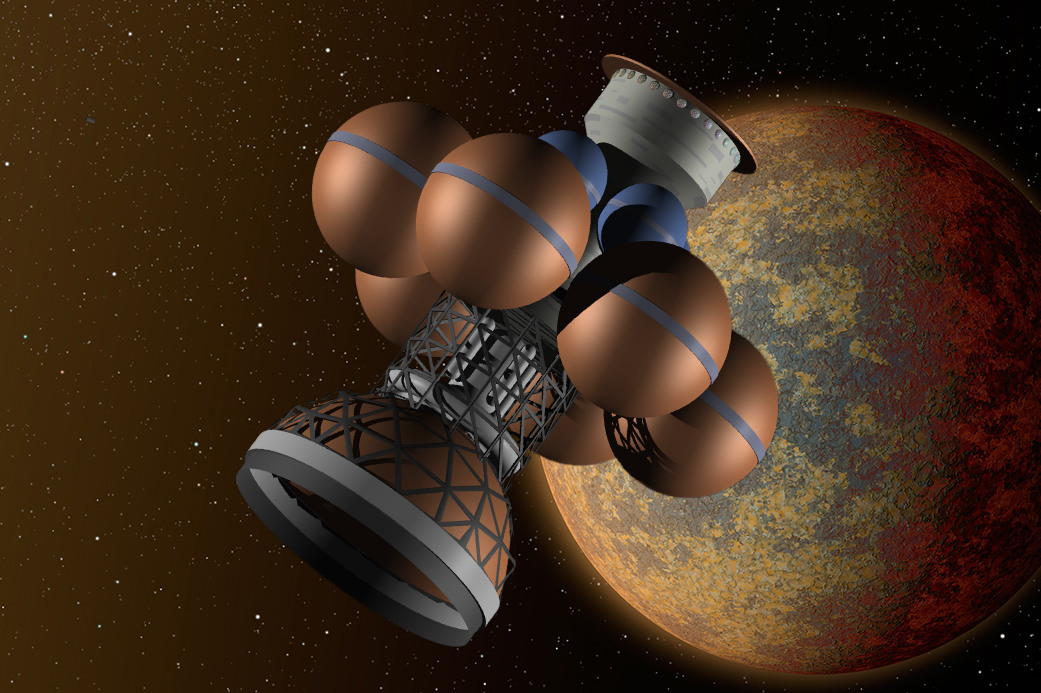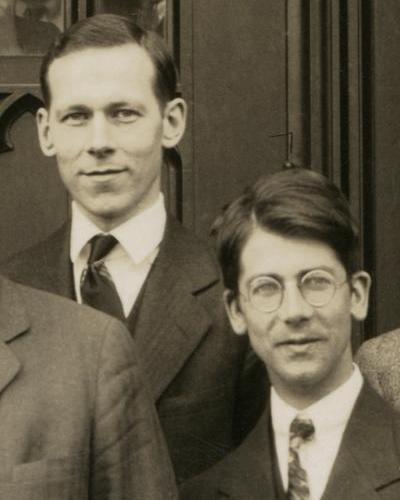|
Friedwardt Winterberg
Friedwardt Winterberg (born June 12, 1929) is a German-American theoretical physicist and was a research professor at the University of Nevada, Reno. He is known for his research in areas spanning general relativity, Planck scale physics, nuclear fusion, and plasmas. His work in nuclear rocket propulsion earned him the 1979 Hermann Oberth Gold Medal of the Wernher von Braun International Space Flight FoundationBio from the website. and a 1981 citation by the Nevada Legislature. He is also an honorary member of the German Aerospace Society Lilienthal-Oberth. Biography Winterberg was born in 1929 in |
Berlin
Berlin ( , ) is the capital and largest city of Germany by both area and population. Its 3.7 million inhabitants make it the European Union's most populous city, according to population within city limits. One of Germany's sixteen constituent states, Berlin is surrounded by the State of Brandenburg and contiguous with Potsdam, Brandenburg's capital. Berlin's urban area, which has a population of around 4.5 million, is the second most populous urban area in Germany after the Ruhr. The Berlin-Brandenburg capital region has around 6.2 million inhabitants and is Germany's third-largest metropolitan region after the Rhine-Ruhr and Rhine-Main regions. Berlin straddles the banks of the Spree, which flows into the Havel (a tributary of the Elbe) in the western borough of Spandau. Among the city's main topographical features are the many lakes in the western and southeastern boroughs formed by the Spree, Havel and Dahme, the largest of which is Lake Müggelsee. Due to its l ... [...More Info...] [...Related Items...] OR: [Wikipedia] [Google] [Baidu] |
Wernher Von Braun
Wernher Magnus Maximilian Freiherr von Braun ( , ; 23 March 191216 June 1977) was a German and American aerospace engineer and space architect. He was a member of the Nazi Party and Allgemeine SS, as well as the leading figure in the development of rocket technology in Nazi Germany and later a pioneer of rocket and space technology in the United States. As a young man, von Braun worked in Nazi Germany's rocket development program. He helped design and co-developed the V-2 rocket at Peenemünde during World War II. Following the war, he was secretly moved to the United States, along with about 1,600 other German scientists, engineers, and technicians, as part of Operation Paperclip. He worked for the United States Army on an intermediate-range ballistic missile program, and he developed the rockets that launched the United States' first space satellite Explorer 1 in 1958. He worked with Walt Disney on a series of films, which popularized the idea of human space travel in ... [...More Info...] [...Related Items...] OR: [Wikipedia] [Google] [Baidu] |
Project Daedalus
Project Daedalus (named after Daedalus, the Greek mythological designer who crafted wings for human flight) was a study conducted between 1973 and 1978 by the British Interplanetary Society to design a plausible uncrewed interstellar probe.Project Daedalus Study Group: A. Bond et al., ''Project Daedalus – The Final Report on the BIS Starship Study'', JBIS Interstellar Studies, Supplement 1978 Intended mainly as a scientific probe, the design criteria specified that the spacecraft had to use existing or near-future technology and had to be able to reach its destination within a human lifetime. Alan Bond led a team of scientists and engineers who proposed using a fusion rocket to reach Barnard's Star 5.9 light years away. The trip was estimated to take 50 years, but the design was required to be flexible enough that it could be sent to any other target star. Concept Daedalus would be constructed in Earth orbit and have an initial mass of 54,000 tonnes including 50,000 tonnes ... [...More Info...] [...Related Items...] OR: [Wikipedia] [Google] [Baidu] |
British Interplanetary Society
The British Interplanetary Society (BIS), founded in Liverpool in 1933 by Philip E. Cleator, is the oldest existing space advocacy organisation in the world. Its aim is exclusively to support and promote astronautics and space exploration. Structure It is a non-profit organisation with headquarters in London and is financed by members' contributions. It is situated on South Lambeth Road ( A203) near Vauxhall station. History The BIS was only preceded in astronautics by the American Interplanetary Society (founded 1930), the German VfR (founded 1927), and Soviet Society for Studies of Interplanetary Travel (founded 1924), but unlike those it never became absorbed into a national industry. Thus it is now the world's oldest existing space advocacy body. When originally formed in October 1933, the BIS aimed not only to promote and raise the public profile of astronautics, but also to undertake practical experimentation into rocketry along similar lines to the organisations above ... [...More Info...] [...Related Items...] OR: [Wikipedia] [Google] [Baidu] |
Atomic Clock
An atomic clock is a clock that measures time by monitoring the resonant frequency of atoms. It is based on atoms having different energy levels. Electron states in an atom are associated with different energy levels, and in transitions between such states they interact with a very specific frequency of electromagnetic radiation. This phenomenon serves as the basis for the International System of Units' (SI) definition of a second:The second, symbol s, is the SI unit of time. It is defined by taking the fixed numerical value of the caesium frequency, \Delta \nu_\mathsf, the unperturbed ground-state hyperfine transition frequency of the caesium 133 atom, to be when expressed in the unit Hz, which is equal to s−1. This definition is the basis for the system of International Atomic Time (TAI), which is maintained by an ensemble of atomic clocks around the world. The system of Coordinated Universal Time, Coordinated Universal Time (UTC) that is the basis of civil time implements ... [...More Info...] [...Related Items...] OR: [Wikipedia] [Google] [Baidu] |
International Academy Of Astronautics
The International Academy of Astronautics (IAA) is an independent non-governmental organization established in Stockholm ( Sweden) on August 16, 1960, by Dr. Theodore von Kármán, and recognized by the United Nations in 1996. The IAA has elected members from all over the world. Since 1960, the IAA has brought together the world’s foremost experts in the disciplines of astronautics on a regular basis: * to recognize the accomplishments of their peers, * to explore and discuss cutting-edge issues in space research and technology, and * to provide direction and guidance in the non-military uses of space and the ongoing exploration of the solar system. The IAA is involved in numerous scientific activities. For example, the Academy: * Encourages international scientific cooperation through conferences, symposia and meetings in the area of: space sciences, space life sciences, space technology & system development, space systems operations & utilization, space policy, law & econo ... [...More Info...] [...Related Items...] OR: [Wikipedia] [Google] [Baidu] |
Edward Teller
Edward Teller ( hu, Teller Ede; January 15, 1908 – September 9, 2003) was a Hungarian-American theoretical physicist who is known colloquially as "the father of the hydrogen bomb" (see the Teller–Ulam design), although he did not care for the title, considering it to be in poor taste. Throughout his life, Teller was known both for his scientific ability and for his difficult interpersonal relations and volatile personality. Born in Hungary in 1908, Teller emigrated to the United States in the 1930s, one of the many so-called "Martians", a group of prominent Hungarian scientist émigrés. He made numerous contributions to nuclear and molecular physics, spectroscopy (in particular the Jahn–Teller and Renner–Teller effects), and surface physics. His extension of Enrico Fermi's theory of beta decay, in the form of Gamow–Teller transitions, provided an important stepping stone in its application, while the Jahn–Teller effect and the Brunauer–Emmett–Teller (BE ... [...More Info...] [...Related Items...] OR: [Wikipedia] [Google] [Baidu] |
Plasma Physics
Plasma ()πλάσμα , Henry George Liddell, Robert Scott, ''A Greek English Lexicon'', on Perseus is one of the . It contains a significant portion of charged particles – s and/or s. The presence of these charged particles is what primarily sets plasma apart from the other fundamental states of matter. It is the most abundant form of |
Cold War
The Cold War is a term commonly used to refer to a period of geopolitical tension between the United States and the Soviet Union and their respective allies, the Western Bloc and the Eastern Bloc. The term '' cold war'' is used because there was no large-scale fighting directly between the two superpowers, but they each supported major regional conflicts known as proxy wars. The conflict was based around the ideological and geopolitical struggle for global influence by these two superpowers, following their temporary alliance and victory against Nazi Germany and Imperial Japan in 1945. Aside from the nuclear arsenal development and conventional military deployment, the struggle for dominance was expressed via indirect means such as psychological warfare, propaganda campaigns, espionage, far-reaching embargoes, rivalry at sports events, and technological competitions such as the Space Race. The Western Bloc was led by the United States as well as a number of other First W ... [...More Info...] [...Related Items...] OR: [Wikipedia] [Google] [Baidu] |
Operation Paperclip
Operation Paperclip was a secret United States intelligence program in which more than 1,600 German scientists, engineers, and technicians were taken from the former Nazi Germany to the U.S. for government employment after the end of World War II in Europe, between 1945 and 1959. Conducted by the Joint Intelligence Objectives Agency (JIOA), it was largely carried out by special agents of the U.S. Army's Counterintelligence Corps (CIC). Many of these personnel were former members and some were former leaders of the Nazi Party. In February 1945, Supreme Headquarters Allied Expeditionary Force (SHAEF) set up T-Force, or Special Sections Subdivision, which grew to over 2,000 personnel by June. T-Force examined 5,000 German targets with a high priority on synthetic rubber and oil catalysts, new designs in armored equipment, V-2 (rocket) weapons, jet and rocket propelled aircraft, naval equipment, field radios, secret writing chemicals, aero medicine research, gliders, and "scientif ... [...More Info...] [...Related Items...] OR: [Wikipedia] [Google] [Baidu] |
Göttingen
Göttingen (, , ; nds, Chöttingen) is a college town, university city in Lower Saxony, central Germany, the Capital (political), capital of Göttingen (district), the eponymous district. The River Leine runs through it. At the end of 2019, the population was 118,911. General information The origins of Göttingen lay in a village called ''Gutingi, ''first mentioned in a document in 953 AD. The city was founded northwest of this village, between 1150 and 1200 AD, and adopted its name. In Middle Ages, medieval times the city was a member of the Hanseatic League and hence a wealthy town. Today, Göttingen is famous for its old university (''Georgia Augusta'', or University of Göttingen, "Georg-August-Universität"), which was founded in 1734 (first classes in 1737) and became the most visited university of Europe. In 1837, seven professors protested against the absolute sovereignty of the House of Hanover, kings of Kingdom of Hanover, Hanover; they lost their positions, but be ... [...More Info...] [...Related Items...] OR: [Wikipedia] [Google] [Baidu] |
Friedrich Hund
Friedrich Hermann Hund (4 February 1896 – 31 March 1997) was a German physicist from Karlsruhe known for his work on atoms and molecules. Scientific career Hund worked at the Universities of Rostock, Leipzig, Jena, Frankfurt am Main, and Göttingen. Hund worked with such prestigious physicists as Schrödinger, Dirac, Heisenberg, Max Born, and Walter Bothe. At that time, he was Born's assistant, working with quantum interpretation of band spectra of diatomic molecules. After his studies of mathematics, physics, and geography in Marburg and Göttingen, he worked as a private lecturer for theoretical physics in Göttingen (1925), professor in Rostock (1927), Leipzig University (1929), Jena (1946), Frankfurt/Main (1951) and from 1957 again in Göttingen. Additionally, he stayed in Copenhagen (1926) with Niels Bohr and lectured on the atom at Harvard University (1928). He published more than 250 papers and essays in total. Hund made pivotal contributions to quantum theory - esp ... [...More Info...] [...Related Items...] OR: [Wikipedia] [Google] [Baidu] |




.jpg)

.png)


